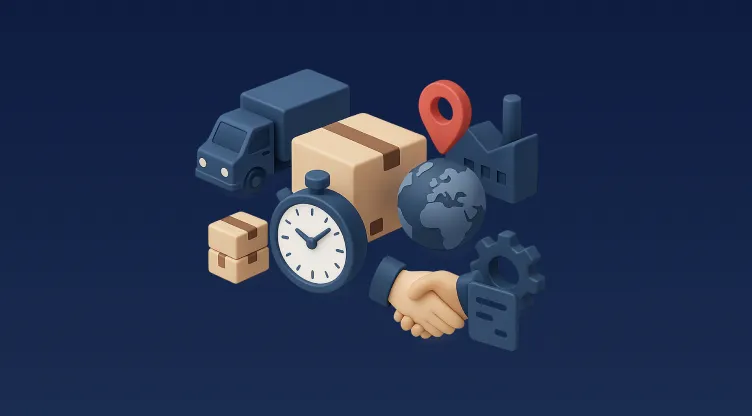Introduction
In today’s fast-paced eCommerce, retail, and logistics landscape, businesses need efficient systems to manage orders and inventory seamlessly. Two critical solutions that power these operations are Order Management Systems (OMS) and Inventory Management Systems (IMS).
While both systems play vital roles in supply chain management, they serve distinct purposes. An OMS focuses on processing customer orders, ensuring seamless fulfillment and multi-channel integration, while an IMS handles stock levels, tracking inventory movement, and ensuring accurate stock availability.
For businesses in the MENA and GCC regions, where cross-border logistics, multi-channel retailing, and 3PL integrations are growing trends, understanding the differences between OMS and IMS is crucial.
This guide explores the key differences, functionalities, and use cases of OMS and IMS, helping businesses choose the right system for their operations.
What is an Order Management System (OMS)?
An Order Management System (OMS) is a centralized software solution that manages the entire order lifecycle—from order placement to fulfillment and returns.
Key Functions of an OMS:
✅ Multi-Channel Order Processing – Integrates orders from eCommerce platforms, marketplaces, POS, and manual entries into a single dashboard.
✅ Automated Order Routing – Assigns orders to the right warehouse, fulfillment center, or retail store based on predefined rules.
✅ Real-Time Order Tracking – Provides customers and businesses with live order status updates.
✅ Returns & Exchange Handling – Manages refund processing and replacement requests.
✅ Payment & Invoice Management – Ensures seamless transactions through integration with payment gateways.
Who Needs an OMS?
- eCommerce businesses managing orders across multiple sales channels.
- Retailers with physical stores and online marketplaces (Omnichannel strategy).
- Third-Party Logistics (3PL) providers handling orders for multiple brands.
- Enterprise supply chains coordinating orders across warehouses.
What is an Inventory Management System (IMS)?
An Inventory Management System (IMS) is a software solution designed to track, manage, and optimize inventory levels across warehouses and sales channels.
Key Functions of an IMS:
✅ Real-Time Inventory Tracking – Monitors stock levels across warehouses, stores, and fulfillment centers.
✅ Stock Allocation & Replenishment – Automates stock transfers and restocking based on demand forecasting.
✅ Batch & Expiry Management – Ensures FIFO (First In, First Out) and expiry tracking for perishable goods.
✅ Cycle Counting & Audits – Helps prevent stock discrepancies by conducting regular inventory audits.
✅ Multi-Location Inventory Control – Manages stock distribution across different geographic locations.
Who Needs an IMS?
- Retailers with multiple stores needing centralized stock control.
- Fulfillment centers and 3PL providers managing large-scale inventory.
- Enterprise businesses operating across multiple regions and warehouses.
- eCommerce brands looking for real-time stock synchronization across platforms.
OMS vs. IMS: Key Differences
| Feature | Order Management System (OMS) | Inventory Management System (IMS) |
|---|---|---|
| Primary Function | Manages order processing, fulfillment, and customer interactions | Manages inventory levels, stock movement, and replenishment |
| Core Focus | Order Lifecycle (placement, processing, shipping, returns) | Stock Management (tracking, auditing, distribution) |
| Users | eCommerce businesses, retailers, 3PL providers, fulfillment centers | Retailers, warehouses, logistics companies, manufacturers |
| System Integration | Connects with IMS, WMS, TMS, and POS | Connects with OMS, WMS, ERP, and sales channels |
| Key Benefits | Ensures smooth order fulfillment, automates workflows, and enhances customer experience | Prevents stockouts, optimizes inventory turnover, and improves warehouse efficiency |
| Example in Action | An OMS routes an online order to the nearest warehouse for fulfillment | An IMS updates stock levels in real-time after the order is fulfilled |
Why Businesses Need Both OMS & IMS
For businesses handling high-volume orders and multi-location inventory, using both OMS and IMS is crucial.
- An OMS ensures orders are processed efficiently, reducing delays in fulfillment.
- An IMS maintains accurate inventory records, preventing stock discrepancies.
- Together, they offer a unified solution for seamless order fulfillment and stock control.
How OMS & IMS Work Together
To illustrate how OMS and IMS interact, let’s consider a retailer selling across multiple channels (own website, Amazon, and a physical store):
- A customer places an order online → The OMS processes the order and checks inventory availability.
- OMS verifies stock → It communicates with the IMS to check inventory levels across warehouses.
- Order fulfillment begins → If stock is available, OMS triggers warehouse fulfillment. If not, it alerts IMS for stock replenishment.
- IMS updates inventory → After shipping, IMS deducts stock levels and synchronizes real-time updates across platforms.
- OMS sends tracking information → Customer receives order tracking updates, and the IMS adjusts future stock needs based on demand.
📌 Key Benefit: When OMS and IMS are integrated, businesses avoid overselling, ensure fast order fulfillment, and maintain optimal stock levels.
OMS & IMS Use Cases in Different Industries
1. eCommerce Businesses
Challenge: Managing orders across multiple sales channels while ensuring accurate stock levels.
Solution:
✅ OMS automates order processing and integrates with marketplaces.
✅ IMS keeps real-time inventory updates to prevent overselling.
2. Third-Party Logistics (3PL) Providers
Challenge: Handling high-volume fulfillment for multiple clients with different stock requirements.
Solution:
✅ OMS ensures efficient order routing to the right warehouse.
✅ IMS tracks inventory per client for accurate stock visibility.
3. Retail Chains (Omnichannel Strategy)
Challenge: Syncing online and in-store inventory for a seamless customer experience.
Solution:
✅ OMS manages orders from both eCommerce and POS systems.
✅ IMS ensures inventory sync across warehouses and stores.
4. Enterprise Supply Chains
Challenge: Managing bulk stock movements across multiple warehouses.
Solution:
✅ OMS streamlines order-to-warehouse assignments.
✅ IMS monitors inventory across regions, ensuring balanced stock levels.
Choosing the Right OMS & IMS Solution
When selecting an OMS or IMS, businesses should consider:
✅ Cloud-Based vs. On-Premise – Cloud-based solutions offer scalability & remote access.
✅ Integration Capabilities – Ensure compatibility with WMS, ERP, POS, and shipping carriers.
✅ Automation & AI-Driven Insights – Look for AI-powered demand forecasting and automated workflows.
✅ Scalability & Multi-Location Support – Essential for fast-growing businesses and global operations.
✅ Ease of Use & User Interface – A well-designed dashboard simplifies operations for teams.
Why Choose Omniful’s OMS & IMS?
Omniful offers an integrated OMS and IMS solution tailored for eCommerce, 3PLs, retailers, and supply chains. With advanced features like:
🚀 Real-time inventory synchronization
🚀 AI-driven order routing & fulfillment
🚀 Multi-channel order management
🚀 Automated stock replenishment
Omniful helps businesses achieve operational efficiency, reduce costs, and improve customer satisfaction.
👉 Schedule a Demo to explore Omniful’s OMS & IMS solutions.
Conclusion
Both OMS and IMS are essential components of a well-functioning supply chain. While an OMS ensures smooth order fulfillment, an IMS prevents stock issues and enhances inventory control.
For businesses in MENA, GCC, and global markets, investing in integrated order and inventory management solutions can lead to higher efficiency, reduced operational costs, and improved customer satisfaction.
🚀 Need a unified OMS + IMS solution? Contact Omniful today for a customized demo.
























